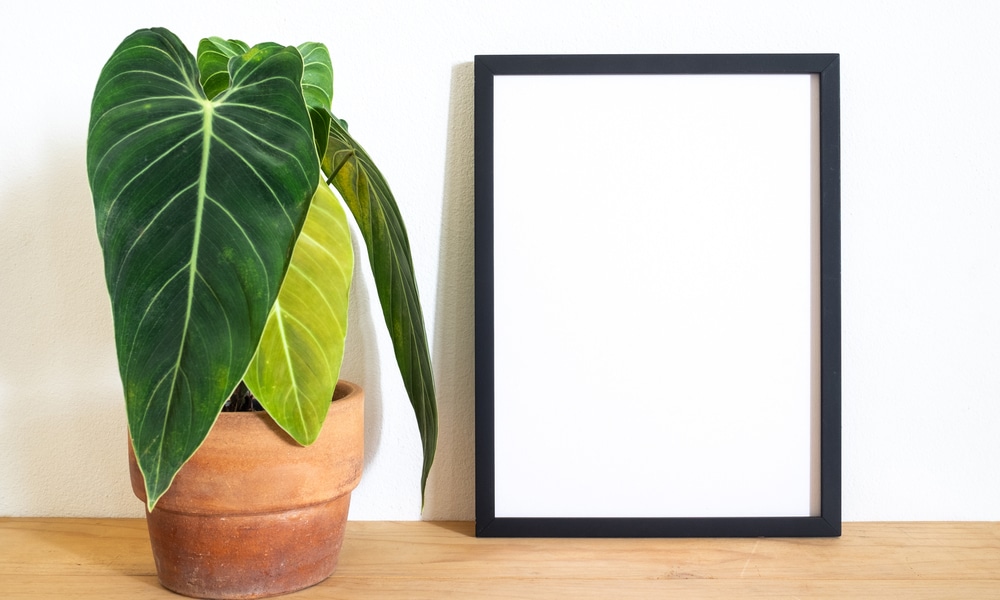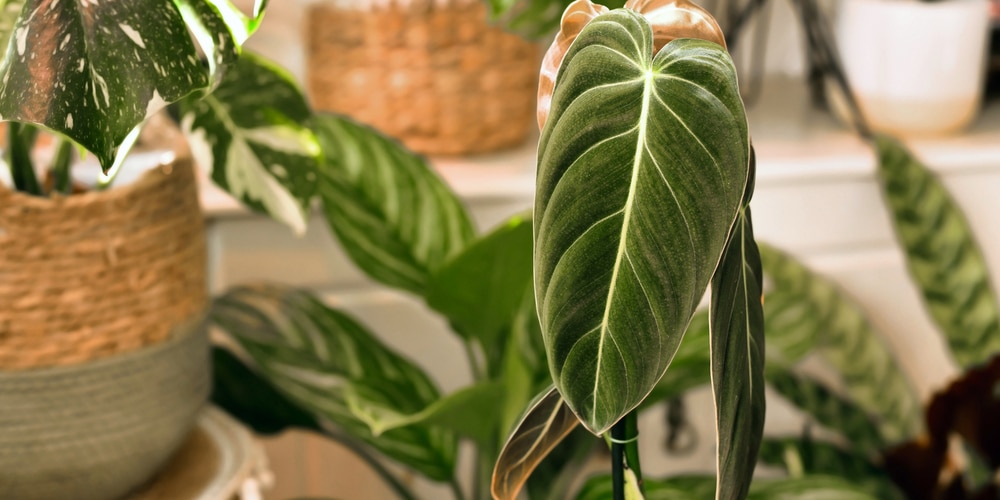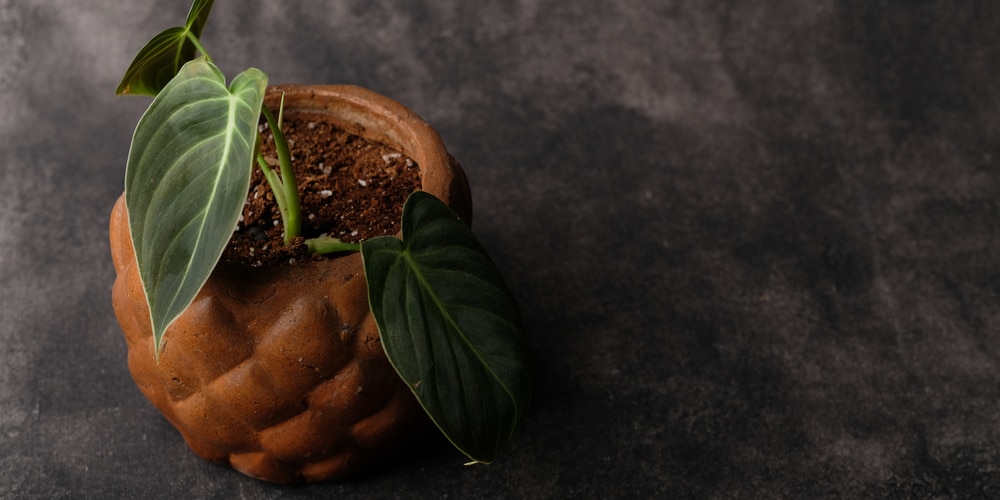The Philodendron Melanochrysum is a beautiful plant that produces long, heart-shaped leaves that are glossy and green. The young leaves are pink when they first grow and darken on maturity. This plant requires little care but shouldn’t be neglected. It does well in a home or office setting and can also be planted outside in the right climate.
Let’s explore the various ways you can care for your Philodendron Melanochrysum and ensure it thrives all year round!
What is a Philodendron Melanochrysum

The Philodendron Melanochrysum is a member of the Araceae family and was originally found in Brazil and Peru. This plant belongs to the group philodendron genus, which consists of more than 400 types of plants. The Melanochrysum is an evergreen vine that has glossy, dark green leaves with a purple discoloration.
The Philodendron Melanochrysum is also known as the ‘angel wings’ due to its heart-shaped leaves. The plant can grow up to 16.25 feet with supports and is suited for indoor or outdoor growing. You can grow the Philodendron Melanochrysum outdoors in USDA zones 9 to 11.
This plant is considered toxic to humans and pets if ingested. It can cause nasty symptoms such as vomiting and diarrhea. The sap from this plant is a strong irritant, and it can cause skin inflammation if you come in contact with it. It’s best to wear gloves when pruning, handling, or repotting your plant.
Caring for Philodendron Melanochrysum
Sunlight needs
Provide your plant with bright indirect light and some partial shade when grown outdoors. Indoor plants require bright but filtered light all year round. Be careful not to leave your plant in the full sun in the summer, or its leaves will become scorched. Plants can get sunburnt even through glass, and this will cause brown patches to form on your plant’s foliage.
Watering Requirements
The best way to tell if your Philodendron Melanochrysum needs water is by monitoring the soil. If you notice the potting mix is dry, moisten it with water and allow it to drain completely. Always test the soil before watering; the topsoil should feel dry.
Do not overwater your plant as too much moisture can cause root rot, making it difficult for your plant to absorb water. If your plant becomes waterlogged, the roots will start to rot, which will mean your plant is unable to absorb the nutrients, oxygen, and water it needs from the soil. Root rot can be treated by removing the plant from its pot, cutting off affected roots, and re-potting it using a new container and soil. You can also treat the roots with a fungicidal spray.
Most people find that their plants need watering between one and three times weekly throughout the growing season. The exact amount will depend on the climate where you live. You can reduce watering in the fall and winter when the plant will become dormant.
If you’ve underwatered, your plant the soil will be completely dry, and the leaves will look limp and begin to turn yellow. In most cases giving the plant a thorough soak will help to revive it.
Fertilization
To ensure healthy growth of your Philodendron Melanochrysum:
- Feed your plant every month with a balanced liquid fertilizer throughout the year.
- Fertilize in the spring and summer months at half strength with a 15-30-15 NPK ratio.
- During the fall and winter months, feed your plant at quarter strength with an 8-16-8 NPK ratio.
Soil and Repotting
It is best to re-pot your Philodendron Melanochrysum every two years. In the spring, remove your plant from its pot and knock away the old soil from the roots. Fill a new pot with fresh potting mix and place it back in a shady location.
Use a peat-based potting mix with perlite and vermiculite, which is nutrient-rich and drains well. Philodendrons like soil that’s slightly acidic and has a pH range of between 5.0 and 6.0. Don’t use poor quality, sandy soil or your plant’s growth will be stunted.
Propagation
The best way to propagate this plant is by rooting stem cuttings. On a warm, sunny day in the spring or summer months, select 6-8 inch stem cuttings and remove the bottom leaves. Dip the cut end of your plant in rooting hormone and place into fresh potting mix. Keep moist until new growth appears after two weeks.
Pests
Some common pests the melanochrysum may encounter are mealybugs, scales, and spider mites. To control these bugs, wipe down your plant with a damp cloth to remove them from the leaves. If necessary, use an organic pesticide or insecticidal spray to remove stubborn bugs.
Pruning
The Philodendron Melanochrysum doesn’t require much pruning. You can remove old or damaged leaves using a sharp pair of scissors. You may also like to prune your plant slightly to keep it at the desired height, as these plants can get very tall.
Temperature and Humidity Requirements
Philodendron Melanochrysum can withstand a minimum temperature of 55°F. These plants thrive in a warm and humid environment but will require more care if grown indoors during the winter months.
The best way to care for this plant is in a humid, warm environment. If growing indoors during the winter months, humidity levels will need to be monitored and kept between 50 and 70%. You can mist the plant’s leaves or move your plant to the bathroom or kitchen to improve humidity. Another great way to increase humidity is to group tropical plants or invest in a humidifier.
Conclusion
Philodendron Melanochrysum is unique because it has beautiful leaves that are different shades of pink and green. It looks great in any home or office. The Philodendron Melanochrysum is a very easy plant to grow and maintain, requiring little attention. It needs to be regularly watered and fertilized once a month. Place your plant in an area that gets bright indirect sunlight and mist the leaves to improve humidity. With the correct care the Melanochrysum will grow tall and thrive.
Related: Philodendron Pedatum

